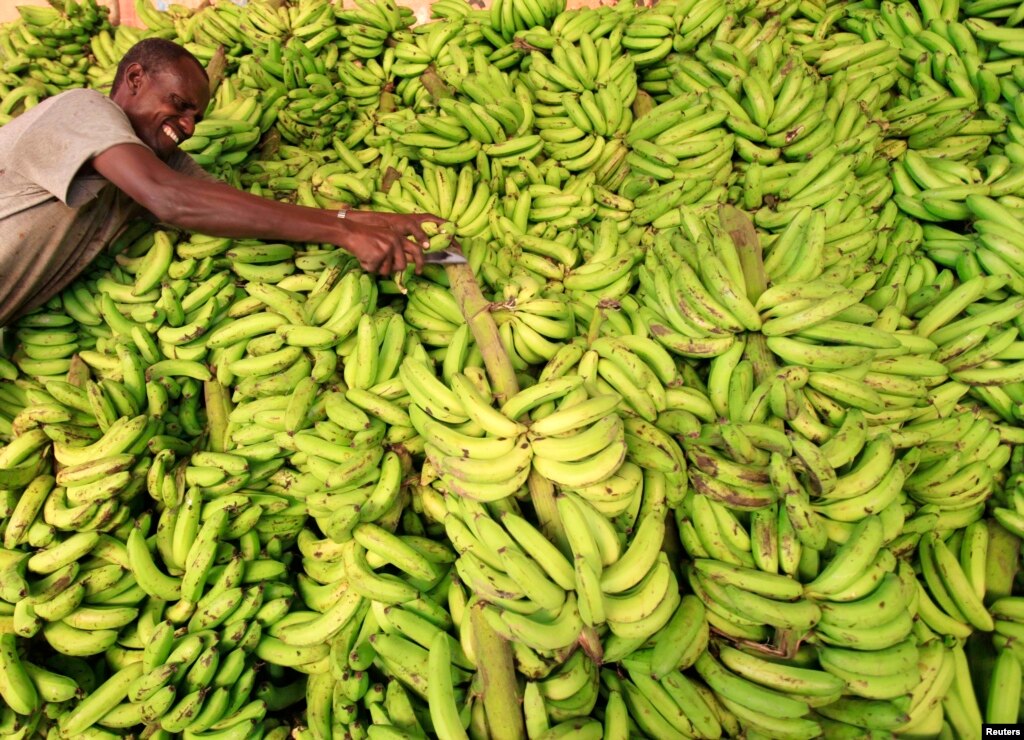
Hello and welcome to As It Is, from VOA Learning English! I’m Faith Lapidus in Washington.
On the show today, the United Nations has called on poor countries to re-think their economic policies.
But first, we hear about efforts to increase trade among member countries of the African Union. Bob Doughty has our report.
African Union Works to Increase Trade
The African Union has held countless meetings and conferences on how to increase trade between African countries. The United Nations Economic Commission for Africa has organized similar gatherings. Yet these efforts have failed to lead to an increase in intra-Africa trade.
Currently, African countries do only 11 percent of their foreign trade with other countries on the continent. By comparison, Asian countries do 50 percent of their trade with Asian countries.
This past July, a UN report urged African governments to provide more support to private businesses, reduce trade barriers and expand public services.
The slow progress makes it difficult for companies to do business in surrounding countries.
Jittu Horticulture PLC is Ethiopia’s biggest exporter of horticulture products. The company’s general manager, Jans Prins, says Ethiopia has huge possibilities for trade. But he says there are too many difficulties when attempting to trade with neighboring countries.
“The major challenge is to reach these markets. It can either be logistic problems like over-flooded border areas, bad roads or no roads, trade barriers, political issues or security issues. For Ethiopia, it’s very difficult to reach markets in the surrounding countries.”
Problems getting visas, corruption, and high transportation costs are some of the barriers companies face when they attempt to trade within the continent. A truck in Africa will travel, on average, just nine kilometers an hour because of the many security or inspection stations. As a result, 40 percent of the cost of a product is for transportation.
Intra-Africa trade -- both imports and exports -- totaled $131 billion in 2011.
African Union countries have agreed to make the continent a free-trade zone by 2017. Treasure Maphanga is the director of the AU’s Trade and Industry Department. She says governments must make that goal of a continental free-trade area a reality.
“I see that in many countries there is a political will that exists at a certain level. Intra-African trade does not just depend on one ministry. It does not just depend on the head of state. It depends on the whole government machinery, and coordinating towards a specific goal.”
I’m Bob Doughty.
(MUSIC)
UN Urges New Ideas to Help Least Developed Countries
You are listening to As It Is, from VOA Learning English. I’m Faith Lapidus.
A United Nations report says the world’s poorest countries should re-think their economic policies because they are failing to create jobs for their citizens. The UN Conference on Trade and Development is warning that current policies will not do a lot to reduce poverty because so few jobs are being created. Our economics reporter, Mario Ritter, has more on the story.
The UN report warns of social unrest and growing numbers of immigrants if the employment situation in these countries does not improve.
Taffere Tesfachew is with the UN Conference on Trade and Development. He says a new way of thinking is needed. He says no one questions the need for economic growth. But that growth needs to create jobs.
“But I think the question is - perhaps there is a way you grow and create employment, and there is a way you grow you do not create employment. The policies followed by many least developed countries and those especially which did not create employment while there is a need to create employment.”
The World Bank and International Monetary Fund have called for economic stability and liberalization policies for poor and undeveloped countries. But these policies have failed to create many jobs, even during the period of economic expansion from 2002 to 2008. During that period, many least developed countries grew each year at rate of eight percent or more.
The United Nations has identified 49 “least developed countries.” Thirty-four are in Africa.
There are nine others in Asia, five in the Pacific and one in the Caribbean.
Almost all of these countries face rising numbers of men and women entering the labor market. By 2050, the number of young people seeking jobs is expected to rise to 300 million.
Taffere Tesfachew says countries should invest in labor-intensive industries such as manufacturing to create jobs for the millions of unemployed.
“We really believe that infrastructural transformation, countries that are moving, jumping from agriculture to services, bypassing manufacturing, I think they will have a problem. The manufacturing sector, the industrial sector, in particularly manufacturing, is I think critical for countries with large population.”
In the UN report, a country was considered a “least developed” when personal income is below $992 on a three-year average. The report also considered the economic problems each nation faced, and its rating on the Human Assets Index. The index measures issues like health, nutrition, school enrollment and literacy rates.
I’m Mario Ritter.
That’s our show for today. I’m Faith Lapidus. Join us again tomorrow for another As It Is from VOA Learning English.





